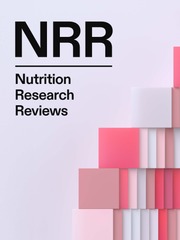Article contents
Anti-ageing natural supplements: the main players in promoting healthy lifespan
Published online by Cambridge University Press: 21 November 2024
Abstract

Ageing is an inevitable biological process accompanied by various physiological changes, and researchers have long sought interventions to promote healthy ageing. This article explores the effects of four natural compounds – omega-3 fatty acids, coenzyme Q10, gingerol and curcumin – on the ageing process. We delve into the scientific literature to examine the potential benefits and mechanisms behind these substances in mitigating age-related conditions. Omega-3’s anti-inflammatory properties, coenzyme Q10’s cellular energy support, gingerol’s antioxidant effects and curcumin’s anti-ageing properties are discussed. By shedding light on the impact of these compounds, this review aims to contribute to a better understanding of how natural substances may play a role in promoting longevity and enhancing the quality of life during the ageing journey.
- Type
- Review Article
- Information
- Copyright
- © The Author(s), 2024. Published by Cambridge University Press on behalf of The Nutrition Society
References
- 1
- Cited by



